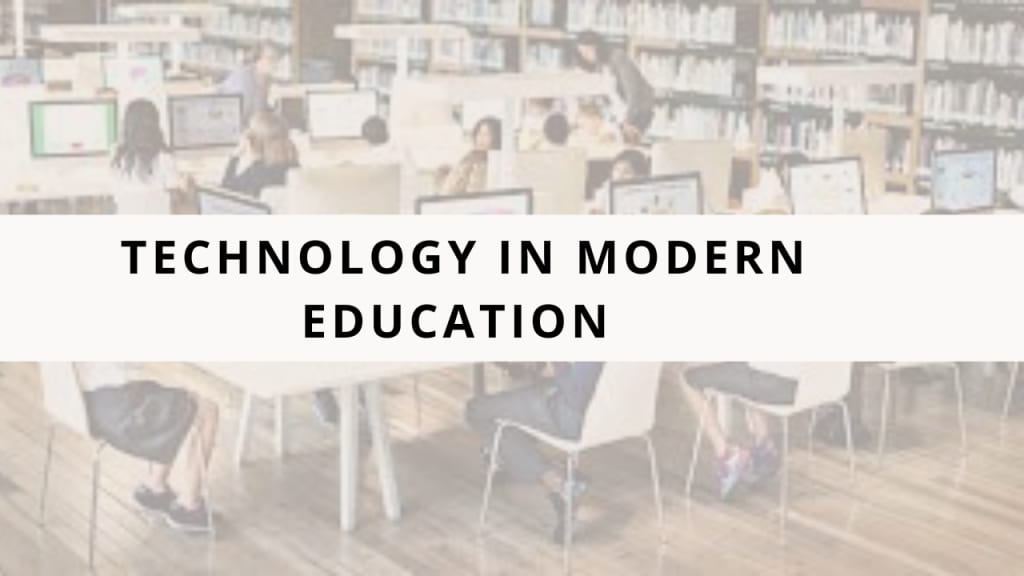The Digital Classroom: How Technology is Revolutionizing Education
The Digital Classroom

The education landscape has undergone a significant shift in recent years, with the integration of technology in classrooms across the globe. From interactive whiteboards to online learning platforms, technology has revolutionized the way we learn, making education more accessible and engaging for students of all ages. In this article, we will explore how technology is transforming the traditional classroom, and the benefits it brings to both students and educators.
The Benefits of Technology in Education
One of the primary benefits of technology in education is the ability to tailor learning to each student's individual needs. With online learning platforms, students can access a wealth of resources, including tutorials, interactive quizzes, and personalized feedback, allowing them to learn at their own pace. This approach not only boosts student engagement but also improves learning outcomes, as students can take ownership of their learning and track their progress.
Another key advantage of technology in education is its ability to provide students with immediate feedback. Traditionally, students had to wait until a teacher returned their work to see where they had gone wrong. With digital assessments, students receive instant feedback, allowing them to identify and address their weaknesses in real-time. This approach not only saves time but also promotes a growth mindset, encouraging students to learn from their mistakes and improve their performance.
The Role of Technology in Classroom Management
Beyond improving student outcomes, technology has also transformed the way classrooms are managed. With digital tools such as classroom management software, teachers can easily monitor student progress, assign tasks, and provide feedback, all from a centralized platform. This approach not only saves time but also makes it easier for teachers to identify struggling students and provide targeted support.
Technology has also made it easier for teachers to communicate with parents and caregivers. With online communication tools, such as email, messaging apps, and video conferencing software, teachers can share updates on student progress, address concerns, and answer questions, all without leaving the classroom. This approach not only strengthens the partnership between schools and families but also enables parents to play a more active role in their child's education.
The Future of Education
As technology continues to evolve, so too will the way we learn. The future of education is likely to be even more technology-driven, with the potential for virtual and augmented reality, artificial intelligence, and machine learning to transform the way we teach and learn.
Virtual and augmented reality, for example, can provide students with immersive and interactive learning experiences, allowing them to explore complex concepts in new and exciting ways. Artificial intelligence and machine learning, meanwhile, have the potential to personalize learning even further, by analyzing student data and providing tailored recommendations and feedback.
The Benefits of Online Learning Platforms
Online learning platforms are one of the most significant developments in education technology in recent years. These platforms offer students access to a wealth of resources, including tutorials, interactive quizzes, and personalized feedback. This approach not only makes learning more engaging and accessible but also improves student outcomes.
One of the primary benefits of online learning platforms is the ability to learn at your own pace. Unlike traditional classrooms, where everyone is expected to learn at the same pace, online learning platforms enable students to work through the material at their own speed. This approach not only accommodates different learning styles but also ensures that students understand the material before moving on.
Online learning platforms also provide students with instant feedback. With digital assessments, students can see where they went wrong immediately, allowing them to identify and address their weaknesses in real-time. This approach not only saves time but also promotes a growth mindset, encouraging students to learn from their mistakes and improve their performance.
Another key advantage of online learning platforms is the ability to access a variety of resources. With video tutorials, interactive quizzes, and personalized feedback, students can learn in a way that suits them best. This approach not only boosts engagement but also ensures that students have access to the resources they need to succeed.
Online learning platforms also provide opportunities for collaboration and communication. With discussion forums, chat rooms, and video conferencing software, students can connect with their peers and teachers, share ideas, and work together on projects. This approach not only encourages teamwork but also fosters a sense of community, which can be especially important for students who may feel isolated in a traditional classroom setting.
Online learning platforms can also be a cost-effective alternative to traditional education. With no need for physical classrooms or textbooks, online learning can be significantly cheaper than traditional classroom-based education. This approach not only makes education more accessible to students who may not have the financial means to attend a traditional college or university but also allows students to save money on travel and accommodation costs.
Challenges of Technology in Education
While technology has the potential to transform education, there are also several challenges that must be overcome. One of the primary concerns is the potential for technology to widen the achievement gap between students. Not all students have access to the same technology and resources, which can lead to disparities in learning outcomes. This can be especially problematic for students from disadvantaged backgrounds, who may not have access to the same level of technology as their peers.
Another challenge is the potential for technology to distract students. With the prevalence of smartphones, social media, and other digital distractions, students may struggle to stay focused on their studies. This can be especially problematic in online learning environments, where students may be tempted to multitask or procrastinate.
There is also a concern that technology may replace teachers entirely, leading to a loss of personal connection and interaction in the classroom. While technology can certainly enhance the learning experience, it cannot replace the guidance and mentorship that teachers provide.
Technology has the potential to revolutionize education, making learning more engaging, accessible, and personalized than ever before. From online learning platforms to virtual and augmented reality, technology is transforming the way we teach and learn. However, it is important to be mindful of the potential challenges and to ensure that technology is used in a way that promotes equity, engagement, and achievement for all students. As we look to the future of education, it is clear that technology will continue to play a vital role in shaping the way we learn and grow.
About the Creator
nizam uddin
My name is Nizam Uddin and I am thrilled to be a part of Vocal.com's community of writers. As a passionate technology enthusiast, I am excited to share my insights and opinions on the latest trends and innovations in the world of tech.
Enjoyed the story? Support the Creator.
Subscribe for free to receive all their stories in your feed.






Comments
There are no comments for this story
Be the first to respond and start the conversation.